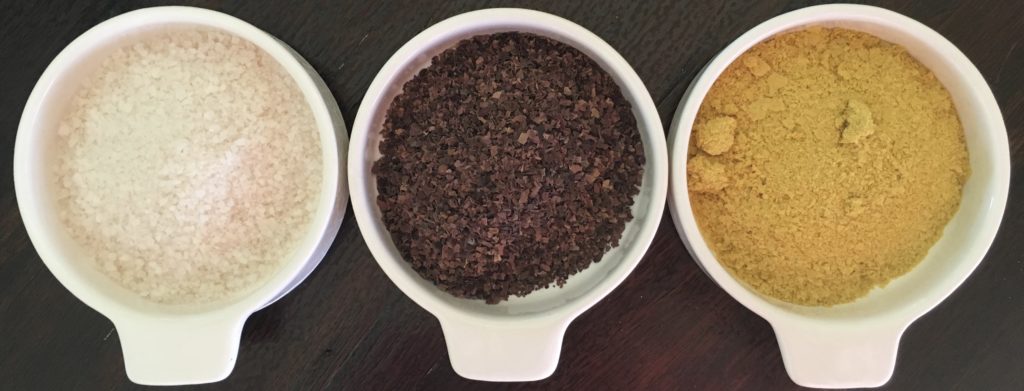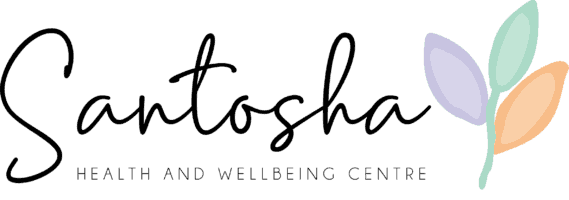
There’s a healthy eating secret that will help you lose weight, gain more energy, reduce digestive upsets and help you live longer. Seems too good to be true doesn’t it? It’s not.
Do you want to know the secret?
Eat real food. There’s an actual diet for that. It’s called the JERF diet. Just. Eat. Real. Food.
Here’s where people get confused though. You can only eat fruit, vegetables, nuts, seeds, meat and anything else that’s not packaged, processed or comes in a box. Confusing? “But if you don’t eat bread and cereal for breakfast, what do you have?” “But what do you have on your vegetables?” “Where does the flavour come from?” are some of the questions.
The problem with packaged and processed food is that it’s been enhanced, usually chemically. It sounds like a conspiracy theory, but big food companies do employ food scientists to make sure you eat lots of their food and you keep coming back for more. Often these foods will trigger parts of your brain that leave you wanting more, more, more! Because it “tastes” so good!
Switching to a real food diet, low in added sugar, salt, additives and preservatives can be hard. A big reason for this is because we’ve lost the art of flavouring our own food. Herbs and spices open up a whole new world when you begin to cook from scratch.
Now I could be here all day and just about fill an encyclopaedia (remember those big books before Google?) about all the herbs and spices and what to do with them. But for now I will share just 5 things that are in my pantry that I use to flavour my food.
These things do come in bottles and packets. However, I do try to source the most natural, most unprocessed forms.
Apple Cider Vinegar
If you read Bragg’s book about apple cider vinegar, it cures everything. I’m not making that claim but it’s pretty versatile. You can also read about ACV here.
What is it?
ACV is fermented apple juice. The sugar in the apples in converted to alcohol through fermentation. It is then converted to vinegar through a second fermentation process.
It is important to purchase a vinegar with the ‘mother’. A murky, cobwebby substance, usually floating on the bottom. This means the ACV hasn’t been pasturized, which destroys all the good enzymes present from the fermentation process. The ‘mother’ maintains the function and effectiveness of the vinegar.
What I use it for:
- Dressings on salads rather than straight vinegar and definitely in place of packaged salad dressing.
- Drinking as a tea when I’m sick. Mixed with some ginger, lemon and juice and honey, this is my go to drink for when I’ve got a cold
- Adding to stocks and broth. When making your own broth (from marrow bones or chicken) you need to something acidic to draw the minerals out of the bone. About a tablespoon (or a big splash) is all that’s needed.
What you can use it for:
Everything mentioned above. You can also add it to you bath for detoxing,
A good quality sea salt
I’ve used them all: Himalayan, Celtic, Peruvian, Murray River, and more. Lately I have been tending towards the Murrary River Pink salt. This is based on a few different factors but mostly ‘food miles’ which should be a big factor in any food you consume. ‘Food miles’ relate to the distance your food has travelled from its source to your plate. The costs involved in transporting food across the planet might work out well for large companies, but for the Earth it’s costly.
But back to the salt…
What is it?
Well we all know what salt is, but why are these different? Salt in its natural form contains many minerals essential for our health. Processed ‘table salt’ has had these natural minerals stripped. It’s often bleached and then has chemicals such as anti-caking agents added to make sure it stays nice in the packaging.
Traditionally salt is obviously used to flavour things and it’s also a great preservative. We have been warned against salt because of conditions such as high blood pressure and other cardiovascular disease. Like sugar, highly processed diets are high in salt because so much is added to make the food taste ok. When preparing your own food, you are in control of how much you add, which means you won’t be consuming as much.
What I use it for:
- I sprinkle a little to flavor my veggies
- Any recipe that calls for salt
- When exercising I will add a tiny amount to my water for extra electrolytes
What you can use it for:
The same thing as always: flavouring your food. Just remember to find a good quality unprocessed salt, use minimal amounts and experiment with other ways to flavour your food, such as herbs and spices and the next couple of products described below.
Dulse
This is something that’s been in my cupboard for years, but I’m really only just getting into it. It has been recommended to me for two reasons. Firstly because I am an O blood type and dulse is beneficial for Os. It’s neutral for all other types, so don’t worry if you don’t know what your type is. Also in Ayurvedic medicine is beneficial for those with a Vata dosha. There are many online ‘find your dosha’ quizzes. The best way is to visit an Ayurvedic practitioner. But if that’s not your thing here is the first website I ever used to find mine: https://store.chopra.com/dosha-quiz
Back to dulse…
What is it?
It’s a red seaweed. Like many of these flavourings I am suggesting, it’s packed full of minerals. Lots of B vitamins, Vitamin A, C and E and lots of minerals such as potassium, calcium and magnesium. Like other sea vegetables it contains iodine which is essential for thyroid and hormone health and lacking in many of our diets. Sea vegetables also contain more bioavailable minerals, meaning they are easier for our bodies to absorb. And dulse is highly alkaline, another important factor in our overall health. Who wouldn’t eat dulse with all those benefits!?
What I use it for:
As I said, I’m really only just getting into it now. I add it to all my soups, stews and casseroles.
What you can use it for:
All things savoury: soups, stews and casseroles, stir fries, miso soup and you can also use it like a ‘salt’ for flavouring dishes like pasta.
Nutritional Yeast
Another Bragg’s product, Nutritional Yeast has been condemned for being a ‘yeast’, thought by some to worsen symptoms such as yeast overgrowth (also known as candida) in our body. Good news is though; this is a totally different form.
What is it?
Nutritional Yeast is different from Brewer’s Yeast (a by-product from the brewing industry, but still high in B vitamins) and Torula Yeast (grown on wood pulp). Nutritional Yeast is grown on beet and cane molasses. The yeast is an organism that feeds on sugar. Through this process it manufactures its own amino acids (building blocks for protein) and vitamins, which is what makes it so healthy for us to consume. It is harvested, washed, cleaned, dried and packaged up.
Nutritional Yeast has a full spectrum of B vitamins which are essential in times of stress, for energy, brain function, digestion and many other roles in the body. It is also very high in protein, chromium which is essential for controlling blood sugars and rich source of phosphorus.
What I use it for:
Much the same as the dulse. I use it in all my soups, stews and casseroles as an addition to or instead of salt.
What you can use it for:
It’s a great replacement for salt, if that’s what you’re looking for. It can be used to flavour gravies and sauces, on salads, to ‘salt’ your popcorn or sprinkled on veggies. I’ve even seen it listed in recipes for smoothies!
Hemp Oil
*This information is only for those living outside Australia. Hemp products are not for human consumption in Australia. However, if you live anywhere but Australia it is perfectly fine. As shown on the Hemp Foods Australia Website:
Hemp Oil is another recent addition to my repertoire. It contains a ratio of Omega 6 to Omega 3 of 3:1 which is a healthier ratio than many processed foods which can 20:1. Omega 3 has been touted as the best oil, but that is because our diets have been so rich in Omega 6, we needed more 3 to balance it out. The truth is Omega 6 is also important. We need these ‘good fats’ for many functions in the body including for our immune system, cardiovascular system, the health of our cells, counteracting the signs of aging and for their anti-inflammatory properties.
Hemp Seed Oil is manufactured from cold-pressing hemp seeds. It is then bottled and sent around the world for consumption, except in Australia and New Zealand where it is only for cosmetic purposes.
What I use it for:
Cosmetic purposes of course, but say I lived in another country…
I would add it to my salads and vegetables for increased fat. We need fat in our diets for the reasons listed above, but also because that’s what sends messages to our brain that tells us we’re full. Fat is also used as slower burning ‘fuel’ for our bodies.
What you can use it for:
If you live outside Australia…
In much the same way olive oil is used. It can be added to pastas, salad dressings, smoothies, shakes and vegetables. It is not recommended for heating (just like olive oil) as the heating process destroys the properties of the oil. You can however, add it after foods have been cooked.
In Australia, Hemp Seed Oil is also good for massage oils, lip balms, soaps, moisturizer and hair conditioner.
